In 2014, Land Rover replaced the Freelander with the introduction of the Discovery Sport. It quickly rose in popularity, as it became one of the automaker’s best selling vehicles, surpassed only by the Evoque.
Similar to the Evoque, the ‘go anywhere’ premium compact SUV is available with different powertrains: a diesel, petrol, mild-hybrid (MHEV) petrol/diesel and a petrol plug-in hybrid electric vehicle (PHEV). This represents a new era of electrified vehicles, where the latter model houses a 15 kWh battery pack.
Combined with its electric motor, the P300e plug-in hybrid, is the most powerful in the manufacturer’s Discovery Sport line-up. It also has a lowered Benefit-in-Kind (BIK) tax rate of 11% and thanks to its battery, the automaker claims it can run up to 34 miles on pure electric power. In turn, this helps reduce its tailpipe emissions from 213g/km down to 44g/km.
If you’d prefer to watch a review of the Land Rover Discovery Sport, head on over to our YouTube channel.
Land Rover Discovery Sport price & competition
The benefits are certainly appealing, however, the PHEV is also the priciest of the bunch. The P300e starts from £48,185, with prices rising to £51,895 before options. That’s a sizable increase over the entry-level D165 pure diesel-powered Discovery Sport, which starts from £32,430; of course, it’s not a fair comparison given the P300e outputs 309hp as opposed to the 163hp of its pure gasoline-powered sibling.
Find the best Land Rover Discovery Sport deals
A breakdown of what you get as standard can be found, below. At the time of writing, the PHEV is available in the Urban Edition, R-Dynamic SE, and HSE trims (click to expand):
When it comes to competition in the PHEV space, there’s the Range Rover Evoque P300e (£45,950), Jeep Renegade 4xe (£32,600), Cupra Formentor e-Hybrid (£36,170), Audi Q3 TFSIe (£38,335), Volvo XC40 Recharge (£39,130), BMW X2 xDrive 25e (£39,390) and Mercedes GLA 250 e (£39,995) to name just a few.
Within the realms of fully electric premium SUVs there’s the Skoda Enyaq iV 80 from £39,365 (331 miles WLTP), the Mercedes EQA 250 from £44,495 (263 miles WLTP); the Audi Q4 40 e-tron at £44,990 (316 miles WLTP); the Volvo XC40 Recharge Twin at £49,950 (259 miles WLTP); the BMW iX3 from £59,730 (285 miles WLTP); the larger Audi e-tron at £62,025 (227-271 miles WLTP); the Jaguar I-Pace at £65,245 (292 miles WLTP); the Mercedes EQC at £65,720 (255 miles WLTP); and the Tesla Model X at £102,980 (348 miles WLTP).
Read next: Range Rover Evoque P300e review: Best luxury hybrid?
Land Rover Discovery Sport exterior review
From the exterior, the Discovery Sport isn’t as stylish as its Evoque sibling but of course, that’s all very subjective. At the front, the Discovery Sport has a smooth uniform design, with elongated air intakes and grilles. Around the back, it has downward-firing exhaust pipes, a small spoiler and stylish-looking taillights. It’s around the side, where the vehicle doesn’t look as classy as the Evoque; it has outward-facing door handles as opposed to the cleverly-concealed owners. Elsewhere, the vehicle’s raised ride height doesn’t invoke a sporty stance either – this has its advantages when it comes to off-roading, however; we’ll touch on this further down.
Our model is fitted with the 18″ Style 5074 gloss sparkle silver alloys, but should you order a new model you’ll get the 20″ Style 5076 silver or black alloys instead. Depending on which trim you choose, 21″ Style 5090 alloys are also available as a £670-£1,015 option.
As for colour options, it comes as standard in the solid ‘Fuji White’ finish. Should you want any of the metallic finishes, such as ‘Santorini Black’, ‘Firenze Red’, ‘Byron Blue’, ‘Eiger Grey’, ‘Portofino Blue’, ‘Lantau Bronze’, ‘Ostuni Pearl White’ or the pictured ‘Hakuba Silver’, it’ll come in at a £705 premium. You can also opt for the two premium metallic finishes, ‘Carpathian Grey’, ‘Silicon Silver’ and ‘Namib Orange’ for £970.
Read next: Citroen C5 Aircross Hybrid review: A comfy and roomy PHEV
Land Rover Discovery Sport interior review
While its exterior design isn’t as stylish as the Evoque, we’d say the interior design goes toe-to-toe with its sibling; from the choice of materials around the cabin to the seat’s upholstery. Indeed, it looks stylish and in most parts, is intuitively designed.
Take for example the steering wheel, it has physical buttons to control your media on the left and cruise control settings on the right. The former also double up as a means of interacting with the part digital instrument cluster. Stalks behind the steering wheel are appropriately positioned, with flappy paddles allowing one to easily shift between the gears. The centre console houses the electronic gear selector and a few storage compartments for your valuables.
However, as we move up towards the dashboard, Land Rover has decided to include physical knobs and capacitive buttons. To us, the latter doesn’t seem intuitive, whereby controlling certain settings isn’t as seamless if you have gloves or have come in from a mountain trek with wet and muddy fingers.
Read next: Our favourite power banks for long journeys
Intriguingly, the automaker has retained two vital controls in form of a set of physical buttons – the fan speed and drive mode selector can be accessed by pressing on a button and adjusting the setting with the respective rotary dial. The two dials also serve as a means of adjusting the in-cabin temperature and when pressed can be used to toggle the front seat heaters.
On the note of odd inclusions, the window and side-view mirror buttons are found near the top of the door frames, rather than by the inner door handle; meaning each time you’d like to adjust these, you’ll need to reach up towards the vehicle’s door triangles.
Moving onto technology, the 10″ display is fluid, comprehensively laid out and further, support Android Auto and Apple CarPlay via a wired connection. Unlike the Evoque, however, it’s not wirelessly supported; at least, it wasn’t at the time of review. Connecting to the infotainment system allows you to play your own music; as standard, there are six speakers located within the cabin, where one can upgrade to the 12 or 15-speaker Meridian audio system, too. The overall audio reproduction of the stock configuration is unfortunately rather poor – if you’d like to hear how the stock system performs, watch our dedicated review of it on YouTube.
Another area of disappointment is the instrument cluster, which in our tested model is part-digital and part-analogue – it seems to have a convoluted design. Should you want a fully digitalized instrument cluster in the Urban Edition trim, you’ll need to fork out £510; this comes as standard in the other trim levels. Elsewhere, a head-up display (HUD) is an additional £610; a feature one might expect to come as standard, given the vehicle’s asking price.
Read next: BMW X2 xDrive25e review: A sporty hybrid crossover
Land Rover Discovery Sport storage review
Thankfully, the Discovery Sport really shines in its ability to store valuables within the cabin and transport large goods in the boot. Starting with the centre console, there’s a compartment at the top for a smartphone, where a USB Type-C port also resides to allow you to connect up to the infotainment system or charge a device. Past the gear selector, there are two cupholders and a generous armrest compartment that’s large enough to fit a purse or wallet. Here, you’ll also find a USB Type-C and Type-A port, and a 12V socket.
Elsewhere, there’s a handy area to store your sunglasses towards the front lighting controls, a sizable glove compartment, and four large door bins – while the latter are roomy, they’re not intuitively designed to cater for a 500ml bottle. At the rear of the cabin, there’s a small storage bay within the centre armrest and two cupholders, and there’s a 12V socket for charging towards the rear of the centre console.
Read next: The best dash cams to mount inside your vehicle
The boot is arguably its biggest selling point. There’s 963 litres of cargo capacity with the seats up and a whopping 1,574 litres with them propped down. By comparison, the Range Rover Evoque has 591/1,383 litres, the Cupra Formentor e-Hybrid has 345/1,475 litres, and the BMW X2 xDrive 25e offers 410/1,290 litres.
Better still, a powered tailgate comes as standard in all the PHEV trim levels. There’s also a large underfloor compartment area for your charging cables, 40:20:40 split-folding rear seats that lay flat when dropped down, a retractable boot cover, fixing points and hooks for your convenience too. Our only complaint with its boot is the maximum operating height of the tailgate; those who are 6-foot (182cm) or taller will need to hunch down to access the rear of the vehicle.
Read next: Cupra Formentor e-Hybrid review: Better than BMW X2?
Land Rover Discovery Sport comfort review
Thankfully within the cabin, 6-foot (182cm) individuals will comfortably seat at the front or rear of the cabin. We’d say even 6-foot 7-inches (200cm) occupants won’t feel henned in, either. Note, the P300e is only available as a five-seater due to its 15 kWh battery pack taking up space at the rear of the cabin – the non-electrified models are available as a seven-seater.
Find the best Land Rover Discovery Sport deals
On the subject of the seats, they’re plenty comfortable, wherein the P300e models, the front two have 12-way electronic controls and are heated. The overall comfort within the cabin is good, but there are some additional options that don’t come fitted as standard. Take, for example, the rear climate controls cost £205; heated steering wheel £230; cabin purifier £335; keyless entry £420. Of course, there are many others but these are, in our opinion, the ones you should consider.
In terms of cabin noise, the Discovery Sport isn’t as well-versed as some of its rivals, where tyre noise creeps in – a detailed breakdown of the vehicle’s cabin noise can be found on our dedicated audio review.
Land Rover Discovery Sport performance review
This perfectly leads us onto driving comfort, where the Discovery Sport excels. Its soft suspension setup eats up potholes and speed bumps and is perfectly suited for taking on more challenging off-road terrain. As a result, the SUV suffers from noticeable body roll when cornering at speed and doesn’t have the best driver’s feel.
Indeed, Land Rover has optimised its SUV for comfort and convenience; the numerous driving modes give you the ability to traverse a variety of roads, while low traction mode, hill descent mode, hill launch, electronic traction control and torque vectoring all provide you with peace of mind if you live or want to travel to remote locations. The Discovery Sport also has a maximum wading depth of 600mm, supports a roof load of 75kg, and has a towing capacity of 750kg for an unbraked trailer, while 1,600kg can be towed if it’s braked. One can bolster the experience by purchasing the £335 tow assist option, too.
Our only complaint with its off-roading capabilities is the vehicle’s inability to operate on an all-wheel drive (AWD) system when it’s in pure electric mode. Indeed, the vehicle works on a rear-wheel drive (RWD) system when it’s emitting zero-tailpipe emissions. Should you require extra traction, the front-mounted engine is required to be in operation so that the AWD system can work.
When it comes to power, the P300e is the most powerful within the Discovery Sport line. Its front-mounted 1.5-litre three-cylinder engine outputs 147 kW (197 hp) of power, and when combined with the rear-mounted 80 kW (109 hp) electric motor they produce up to 230 kW (309 hp) and 540 Nm of torque; we achieved 0-60mph in 6.83 seconds. Granted that’s not as impressive as its all-electric rivals nor sportier SUVs on the market, but we suspect it’ll suffice for most consumers. As for top speed, it’ll get up to 130mph, while in pure electric mode one can attain a speed of 84mph.
Moving onto its transmission, the PHEV houses an eight-speed automatic gearbox. It’s buttery smooth and can be tinkered by shifting to Sport mode via the gear selector or altered by using the flappy paddles found behind the steering wheel. One can also praise the automaker’s seamless transition between the electric and petrol powertrains; you can’t feel the shift and can only hear the three-cylinder engine trickling away towards the front of the cabin.
Read next: The best dash cams to mount inside your vehicle
This leads us to the 15 kWh battery pack, which is claimed to provide 34 miles of all-electric range. In our mixed driving tests, however, we netted around 20-25 miles – a lacklustre performance for a PHEV. Worse still, when its battery is depleted fuel efficiency plummets. When combined with its electric range, we netted around 35 MPG from its 57-litre fuel tank; we suspect one can attain a better figure in the pure petrol or diesel alternatives. Comparatively, the Cupra Formentor e-Hybrid achieved 64 MPG, the Citroen C5 Aircross Hybrid 58 MPG, the Range Rover Evoque P300e 40 MPG, the BMW X2 xDrive 25e 39 MPG, while the Jeep Renegade 4xe attained 36 MPG.
Thankfully, Land Rover has included rapid charging via a CCS port, which accepts up to 32 kW of input. This allows you to connect up to a 50 kW DC charger, and attain 0-80% in just 30 minutes. Plugged into a 7 kW charger, this figure goes up to 90 minutes instead. As for a 3-pin wall socket, it’ll take 6hrs 40mins.
Read next: Volvo XC40 Recharge Twin review: A powerful luxury electric SUV
Land Rover Discovery Sport safety review
Another one of its impressive traits is visibility – it’s extremely easy to check your surroundings, where even the rearview window is large. Better still, there are front and rear parking sensors, and a rearview camera that all come as standard; ‘3D Surround Cameras’ can be added for an additional £585. On the subject of parking, its lightweight steering wheel combined with the vehicle’s power steering, makes for easy manoeuvrability – the Discovery Sport has a kerb-to-kerb turning circle of 11.8m and a wall-to-wall figure of 12.14m.
As for its crash rating, Euro NCAP tested the vehicle back in 2014 and awarded it 5/5 stars. However, its rating validity expired in 2021 – one can only imagine that the P300e would similarly do well in the rigorous crash tests. Onto driver assistance systems, the Discovery Sport has Lane Keep Assist, Cruise Control and Speed Limiter, and an Emergency Braking system. Should you want Blind Spot Assist, Clear Exit Monitor and Rear Traffic Monitor, you’ll need to opt for the R-Dynamic SE or HSE trims.
In our tests, we found Lane Keep Assist rather primitive, where it would only intervene in certain conditions, while Adaptive Cruise Control that features as an option within the £750-1,350 Driver Assist Pack didn’t work well; it failed to actively recognise the vehicle in front and thus struggled to consistently keep a safe distance from the leading vehicle.
Read next: Skoda Enyaq iV review: The Volkswagen ID.4 alternative
TotallyEV’s verdict on the Land Rover Discovery Sport
On the whole, the Land Rover Discovery Sport P300e is a comfortable and spacious SUV. However, given its £48,185 asking price, its fuel efficiency, electric range and performance it’s hard to recommend it over its PHEV rivals unless, of course, you plan to do a lot of off-roading.
Find the best Land Rover Discovery Sport deals
To name just a few alternatives, there’s the Cupra Formentor e-Hybrid (£36,170), Audi Q3 TFSIe (£38,335), Volvo XC40 Recharge (£39,130), and the BMW X2 xDrive 25e (£39,390). Similarly, there are numerous all-electric SUVs you might want to consider if you want to greatly reduce your tailpipe emissions or BIK rate; examples include the Skoda Enyaq iV 80 (£39,365), Audi Q4 40 e-tron (£44,990), and the Volvo XC40 Recharge Twin (£49,950).
Ultimately, we’d recommend one of the aforementioned vehicles instead, but we’d love to hear if and why you’d pick the Discovery Sport P300e over one of its rivals. Let us know in the comments section below or via social media; we’re on: YouTube, Instagram, Facebook, Twitter and LinkedIn.

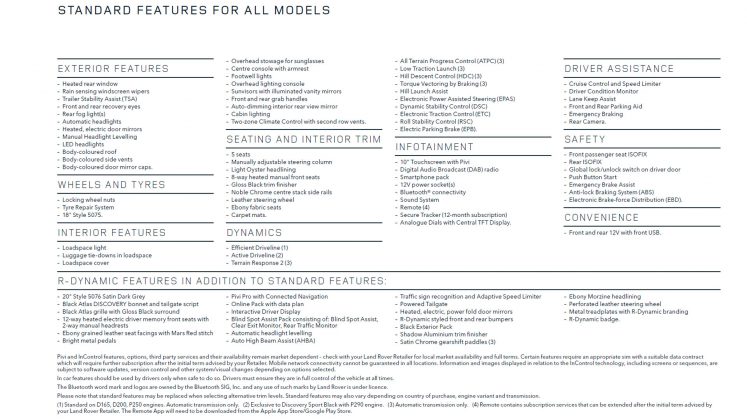
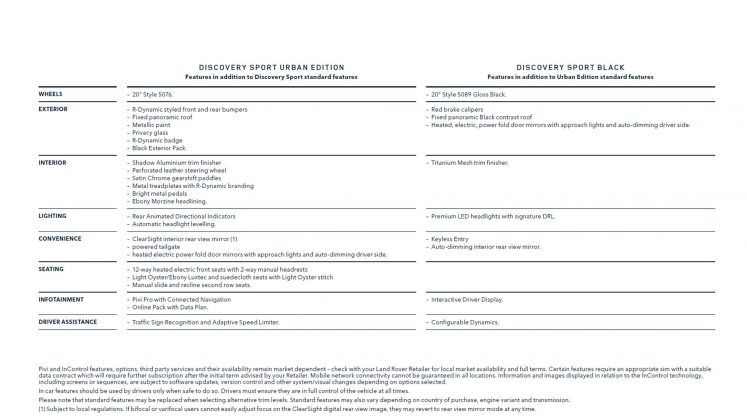
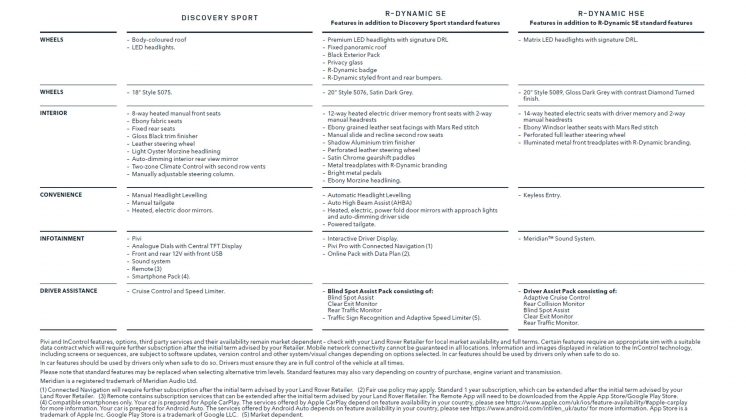
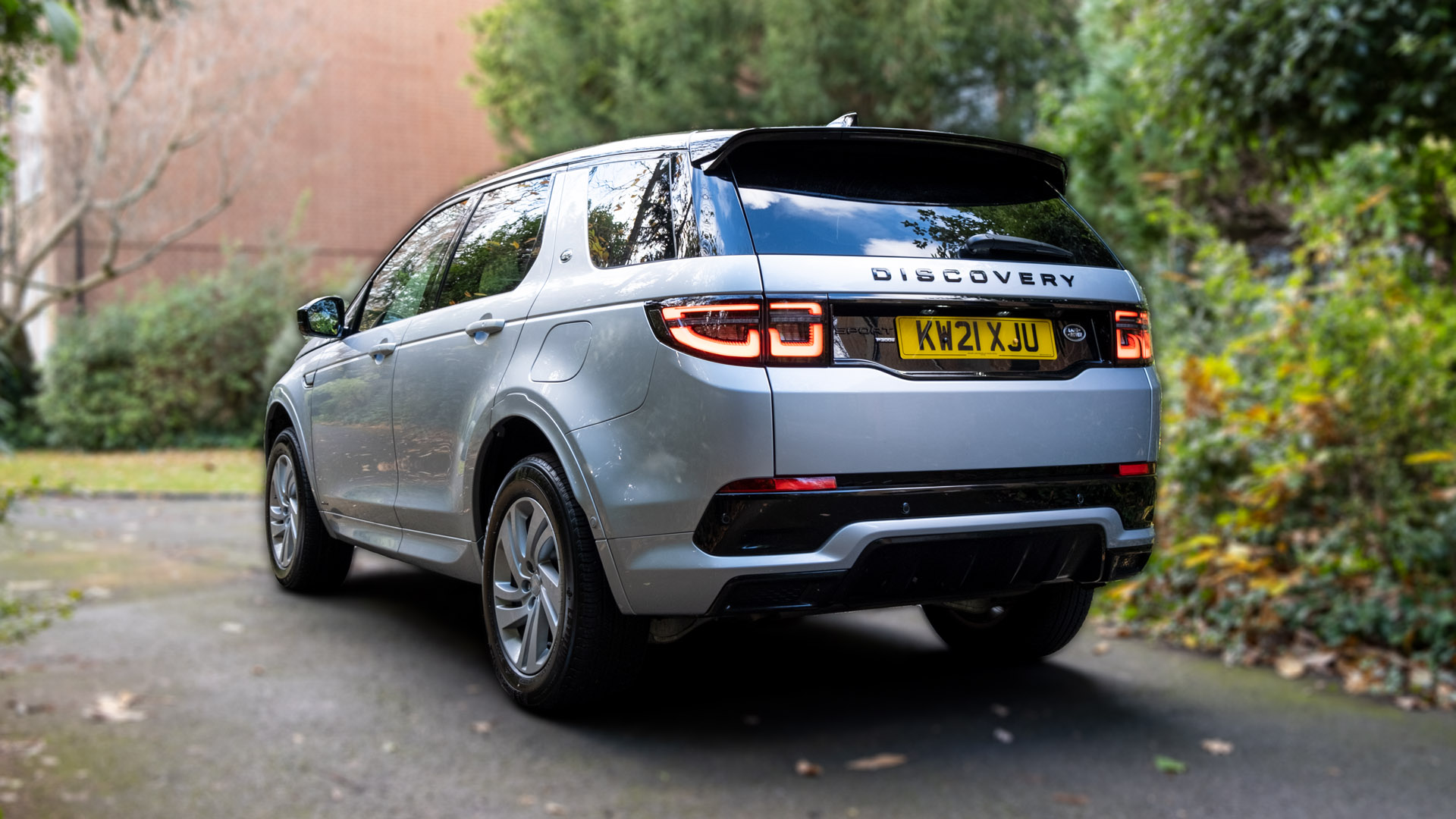
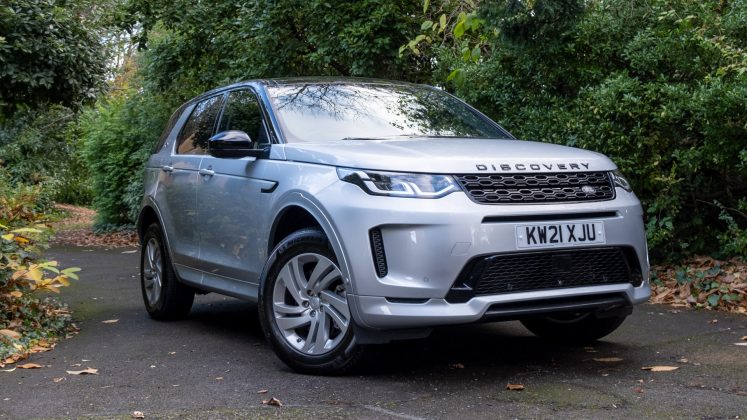
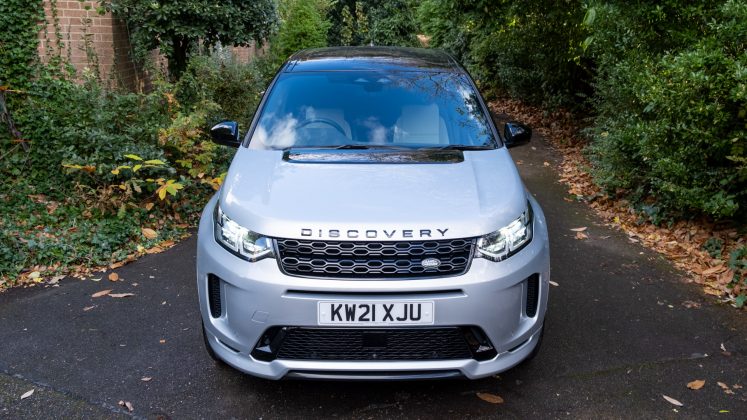
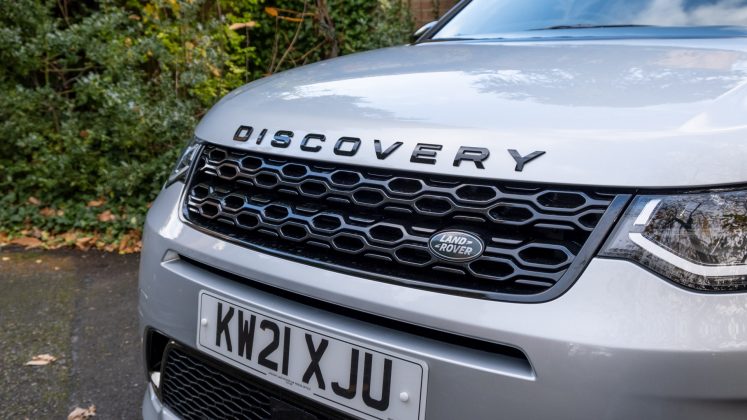
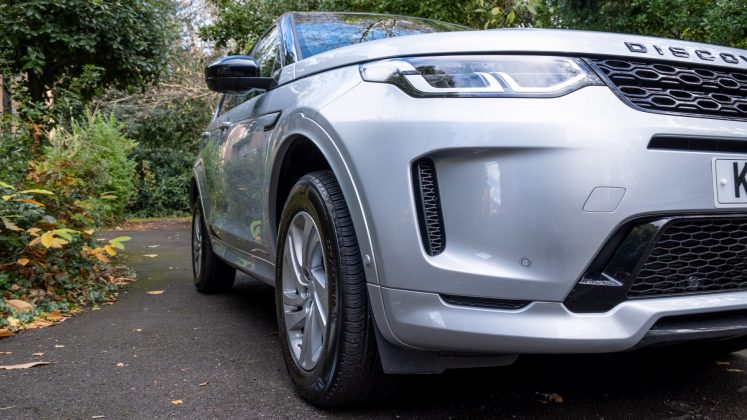
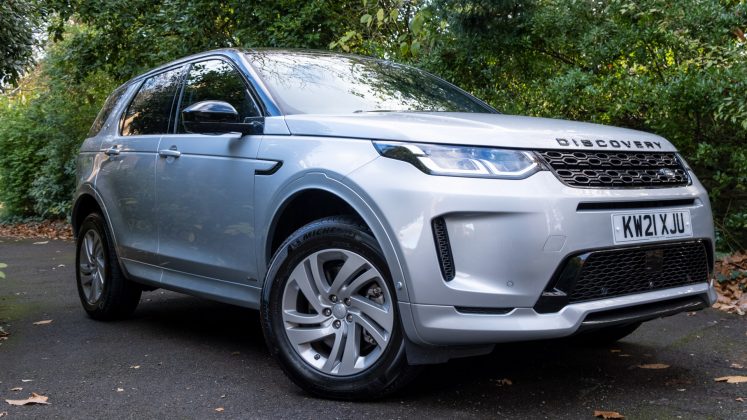
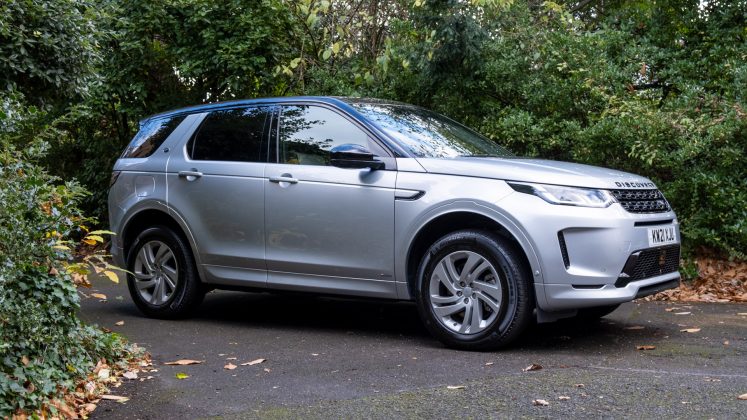
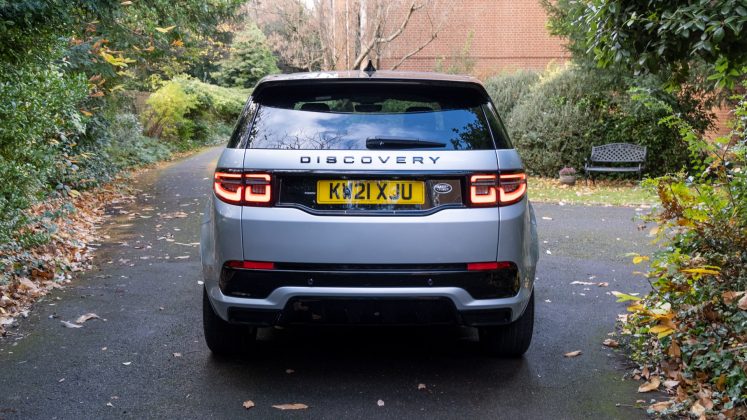
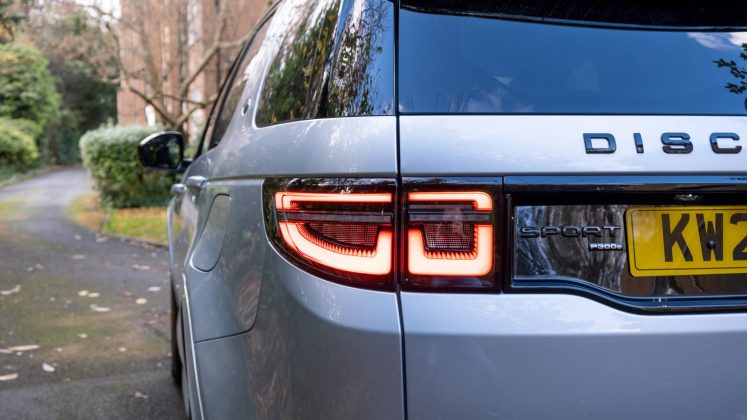
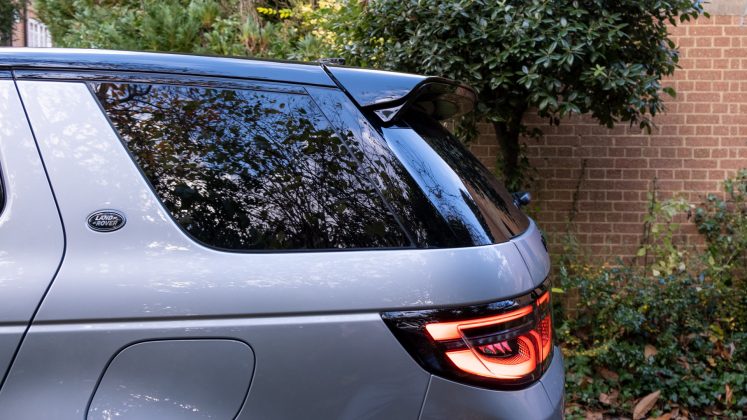
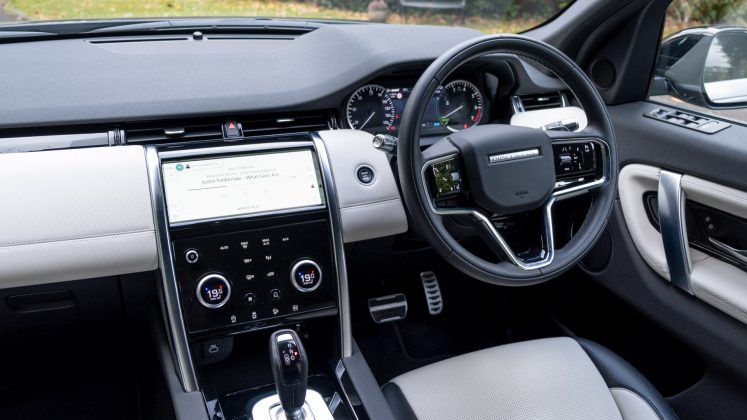
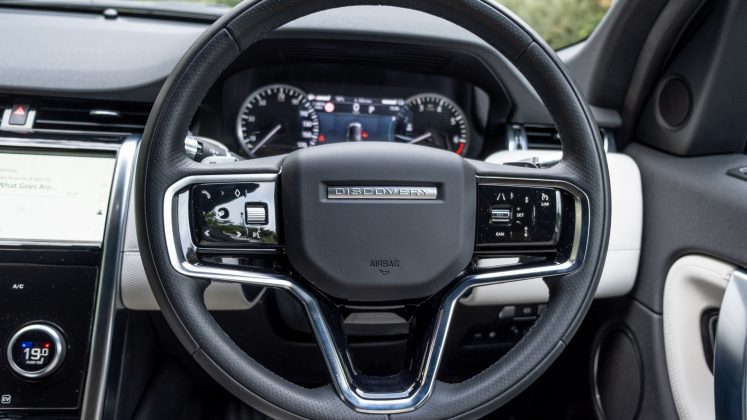
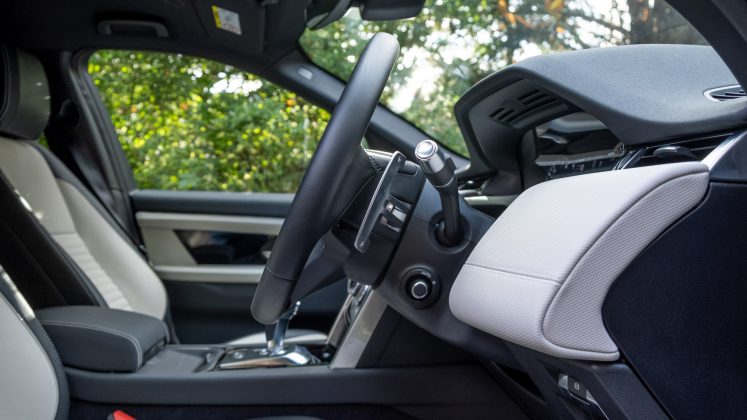
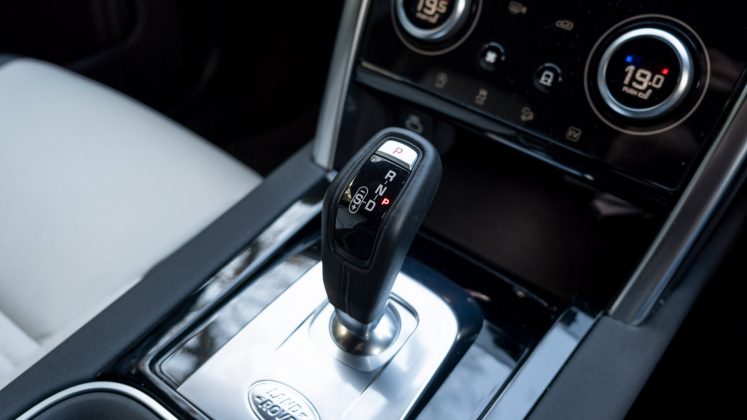
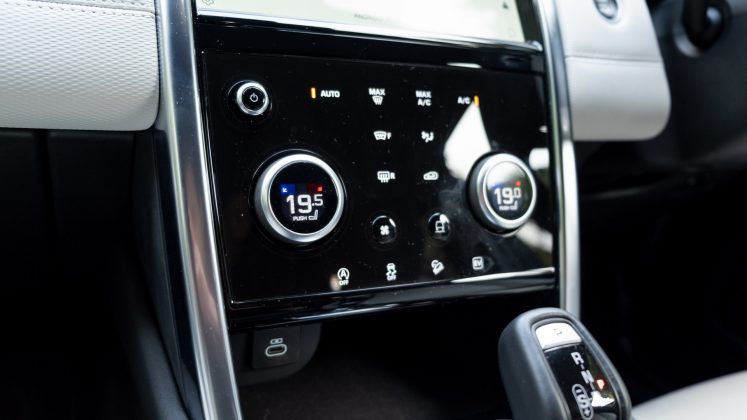
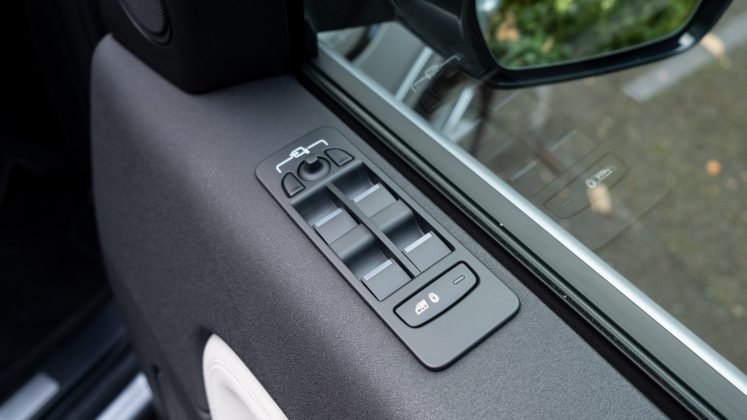
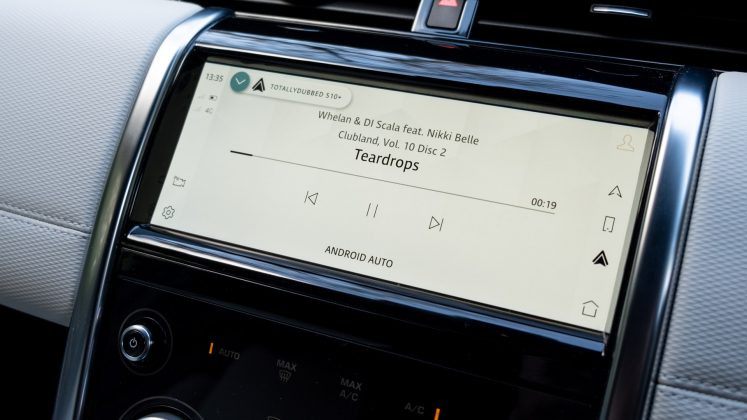
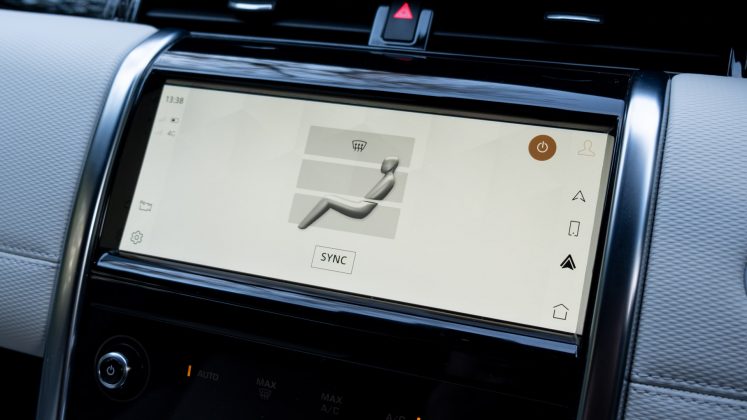
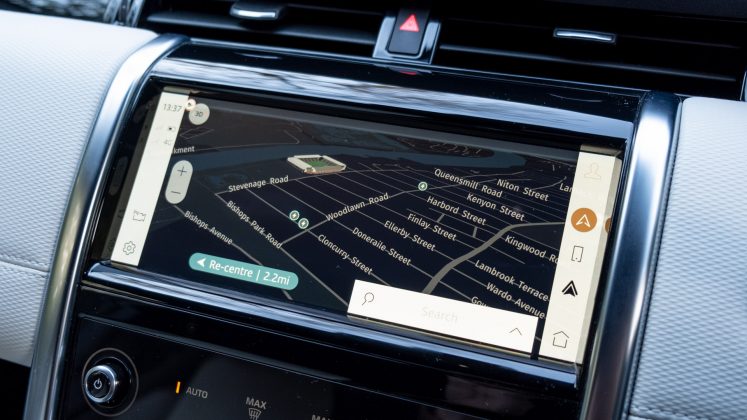
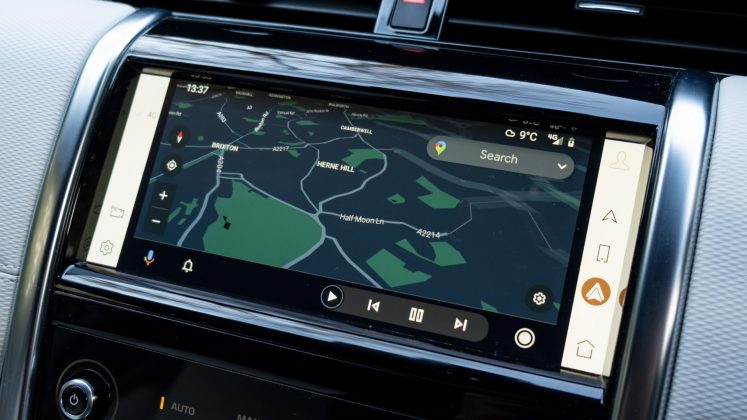
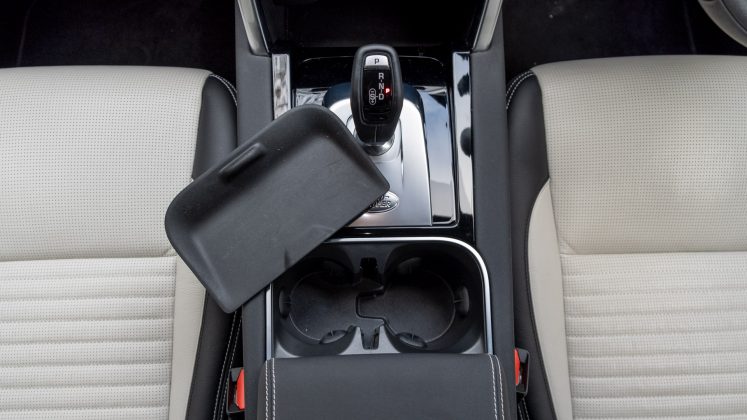
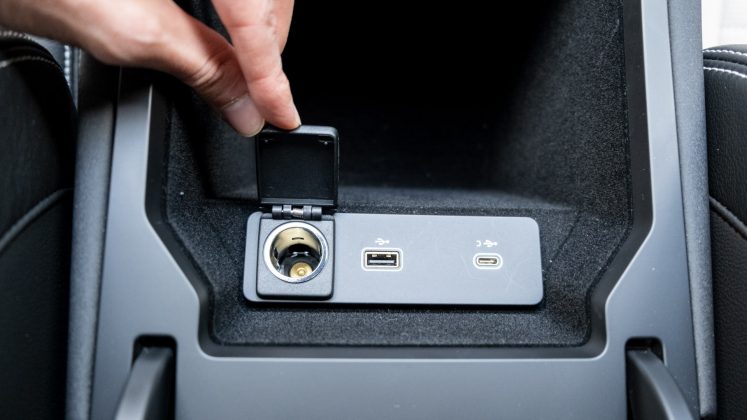
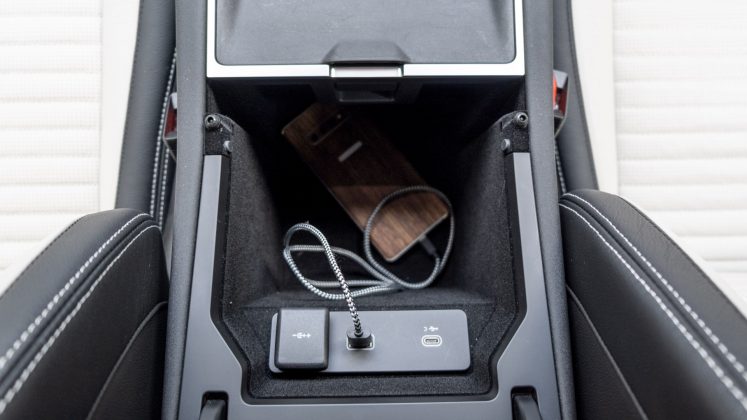
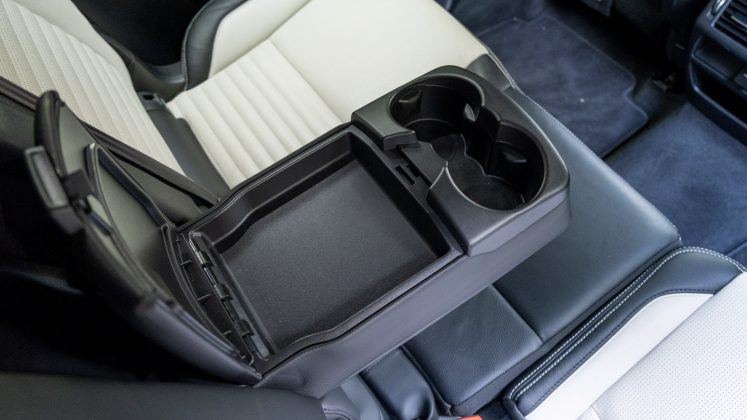
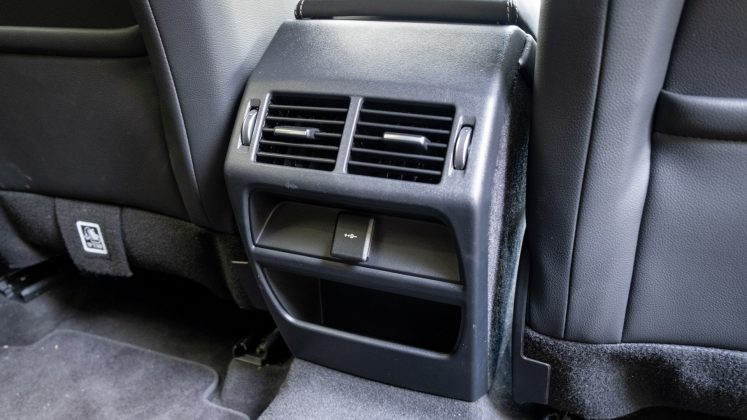
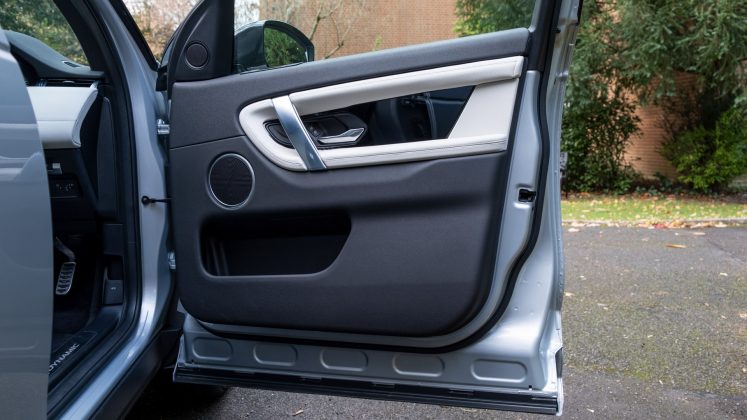
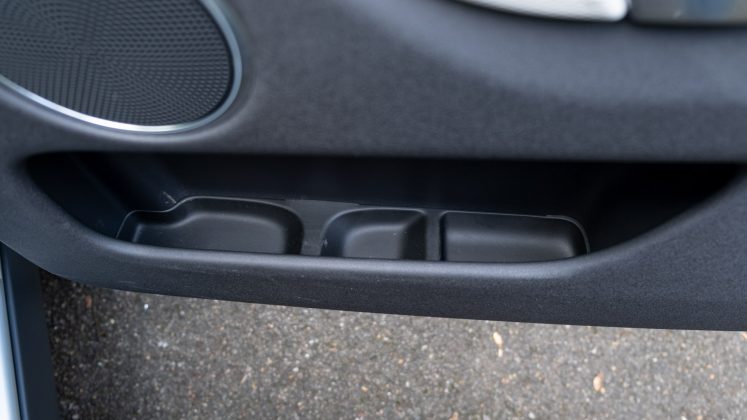
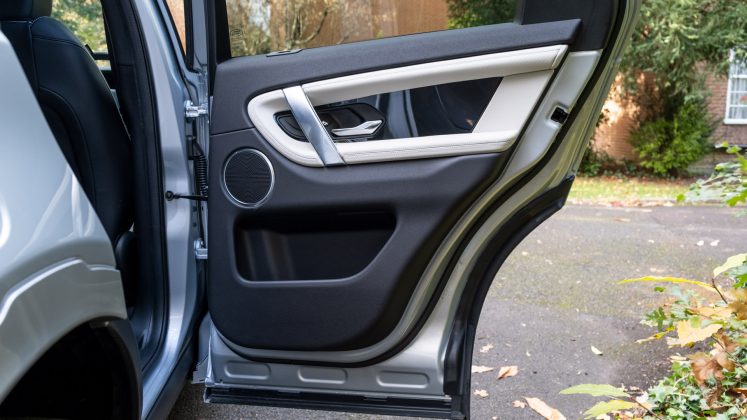
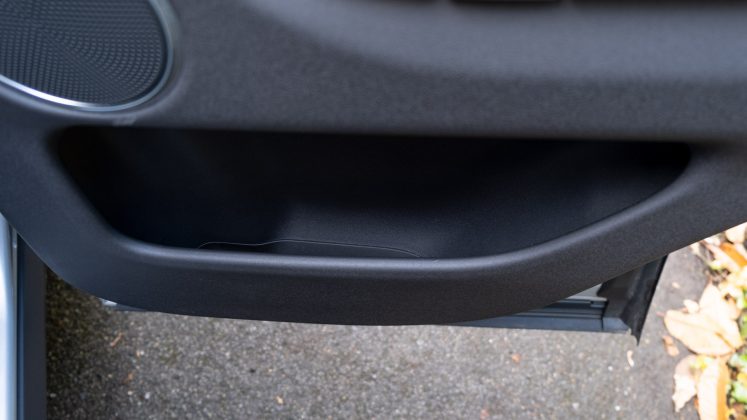
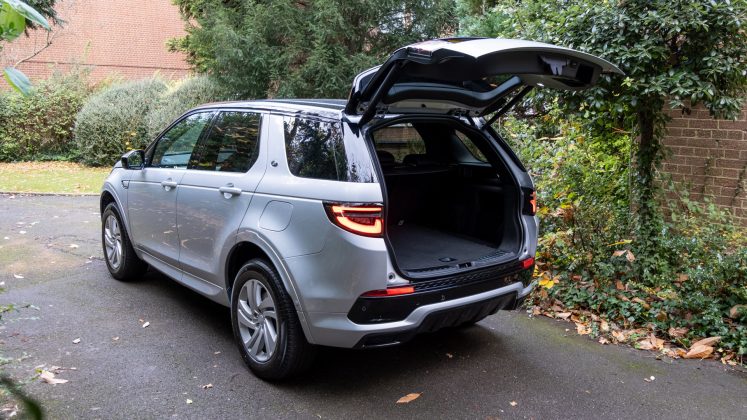
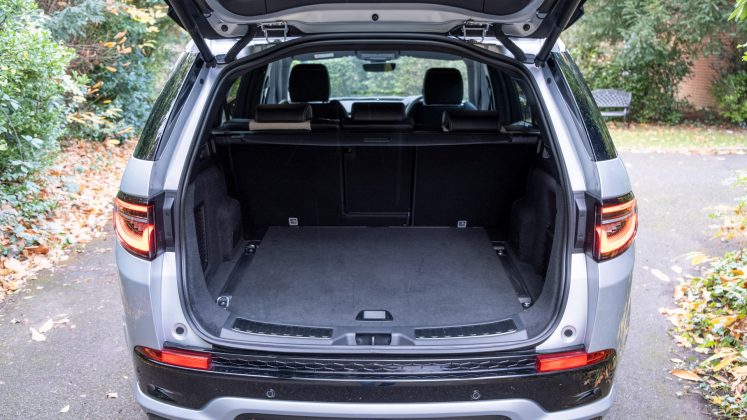
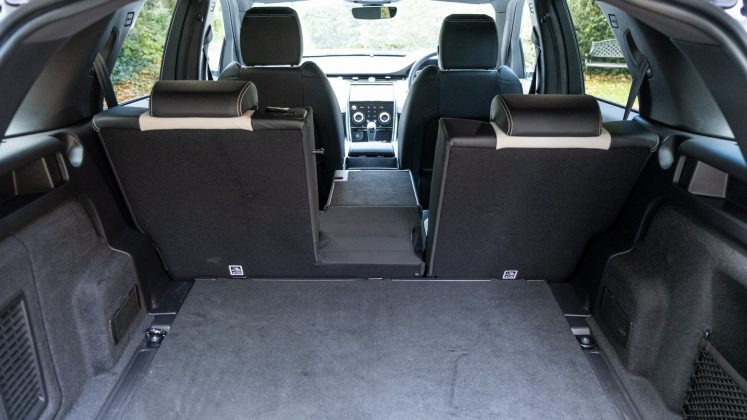
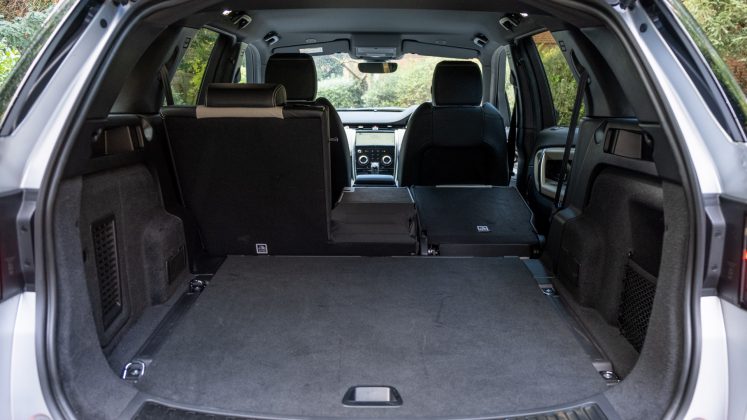
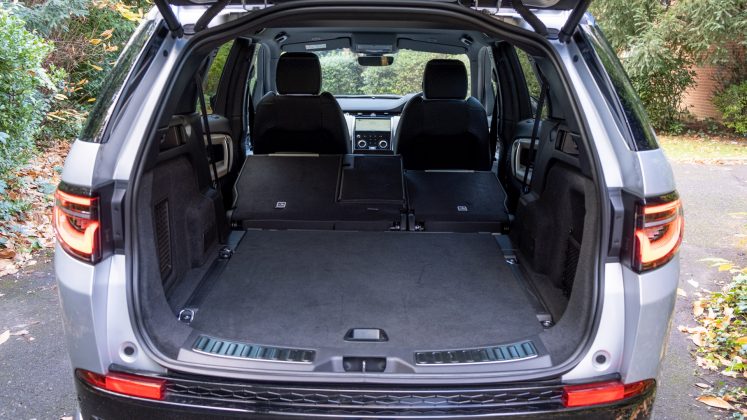
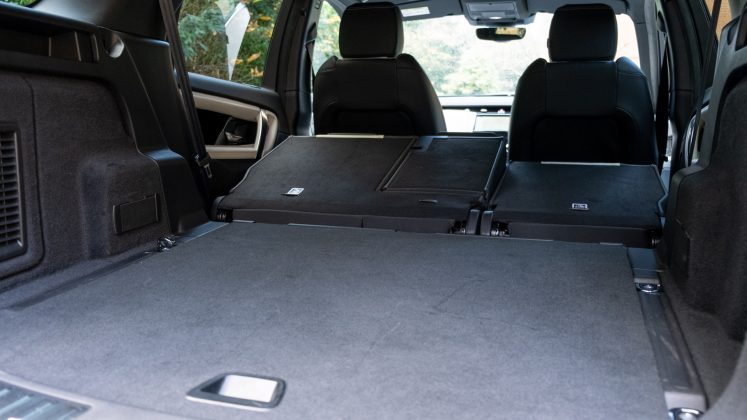
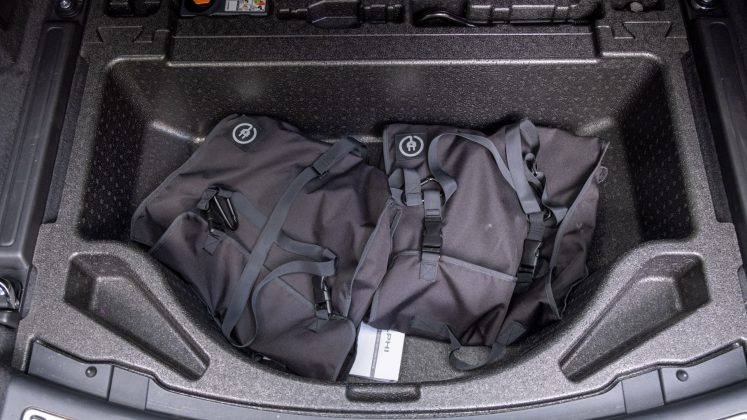
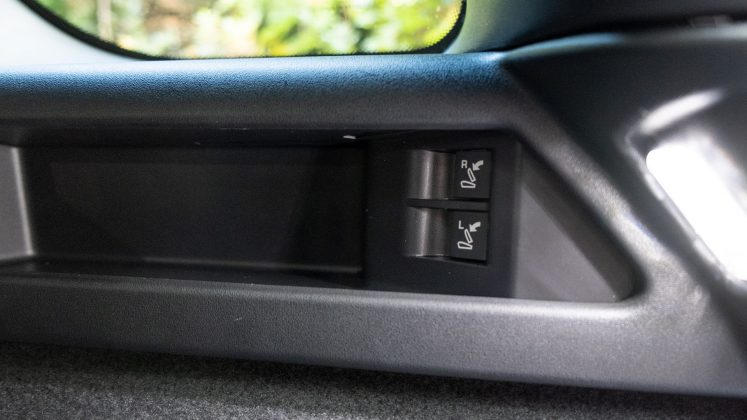
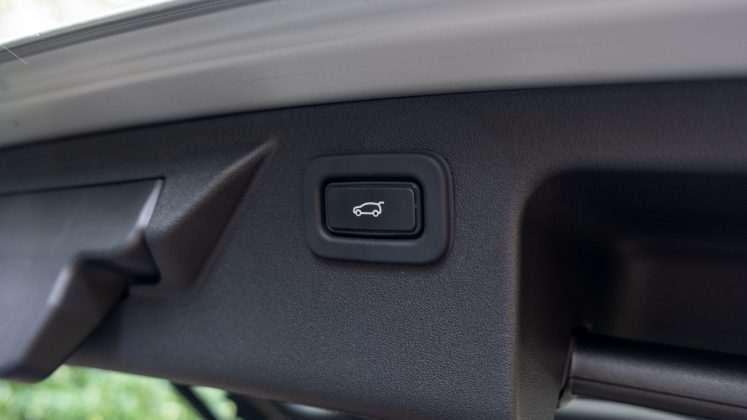
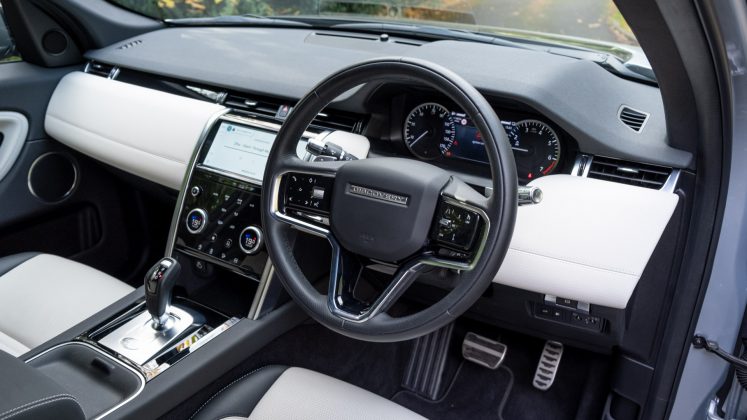
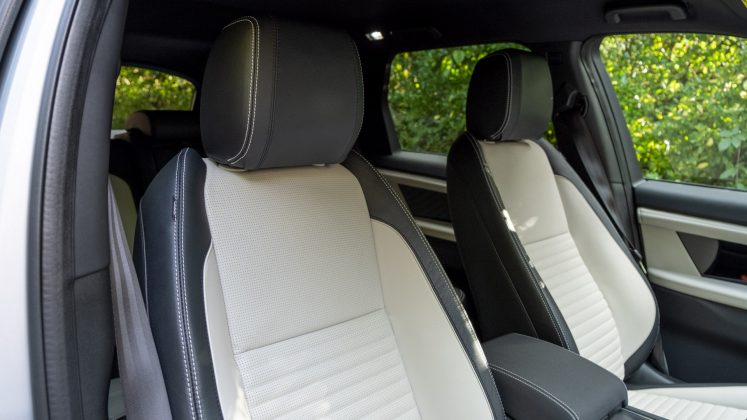
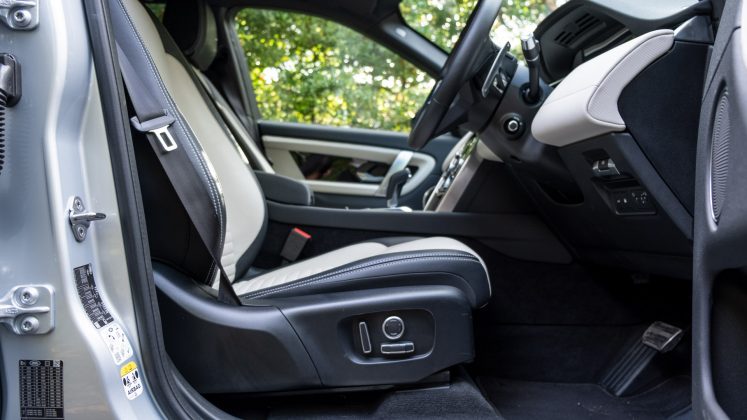
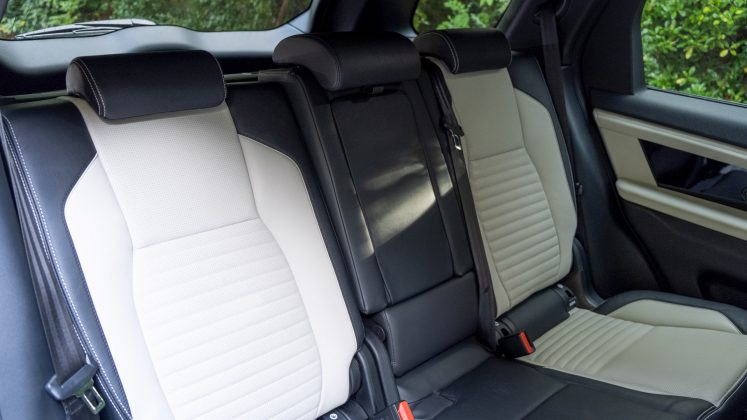
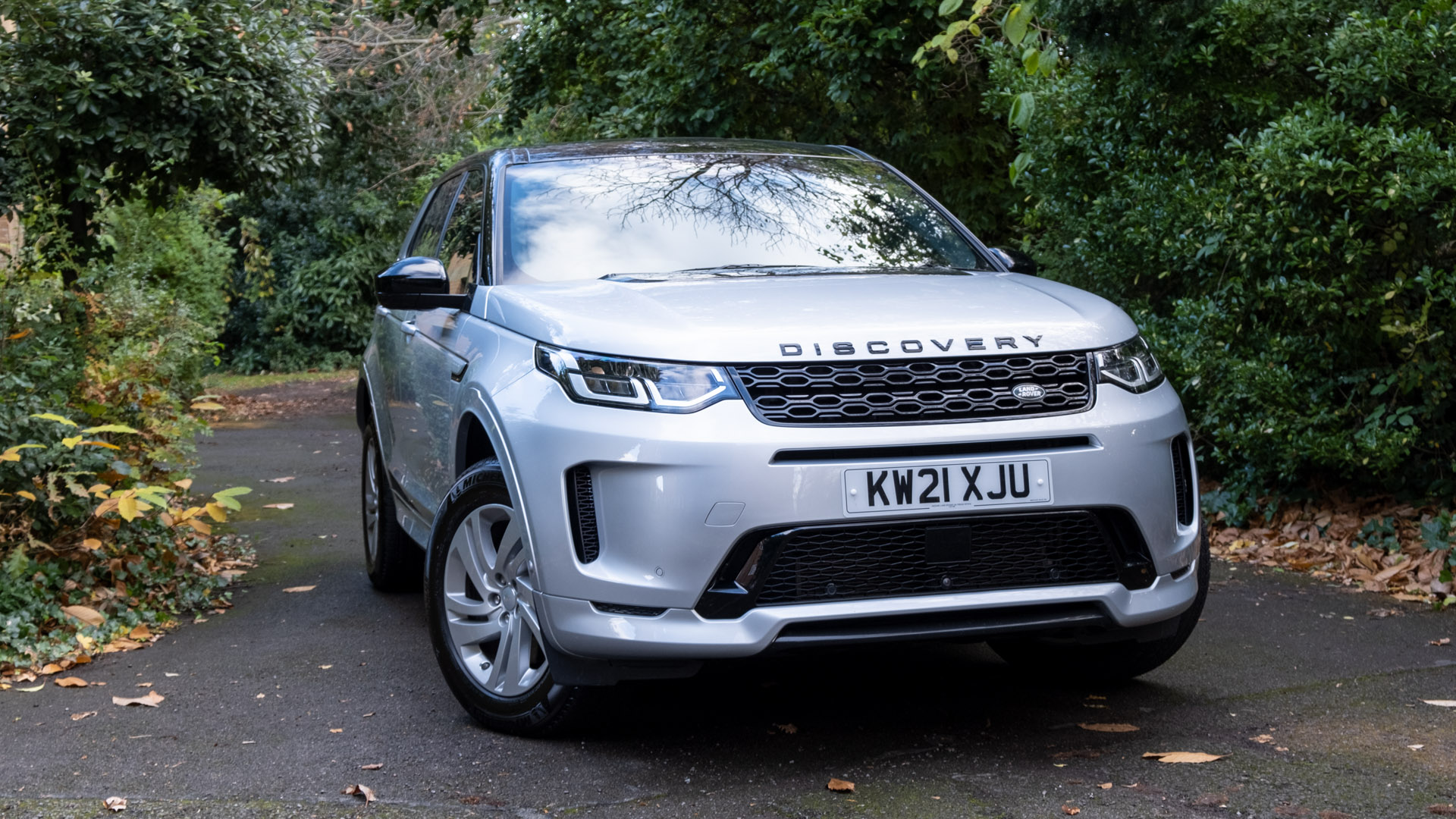
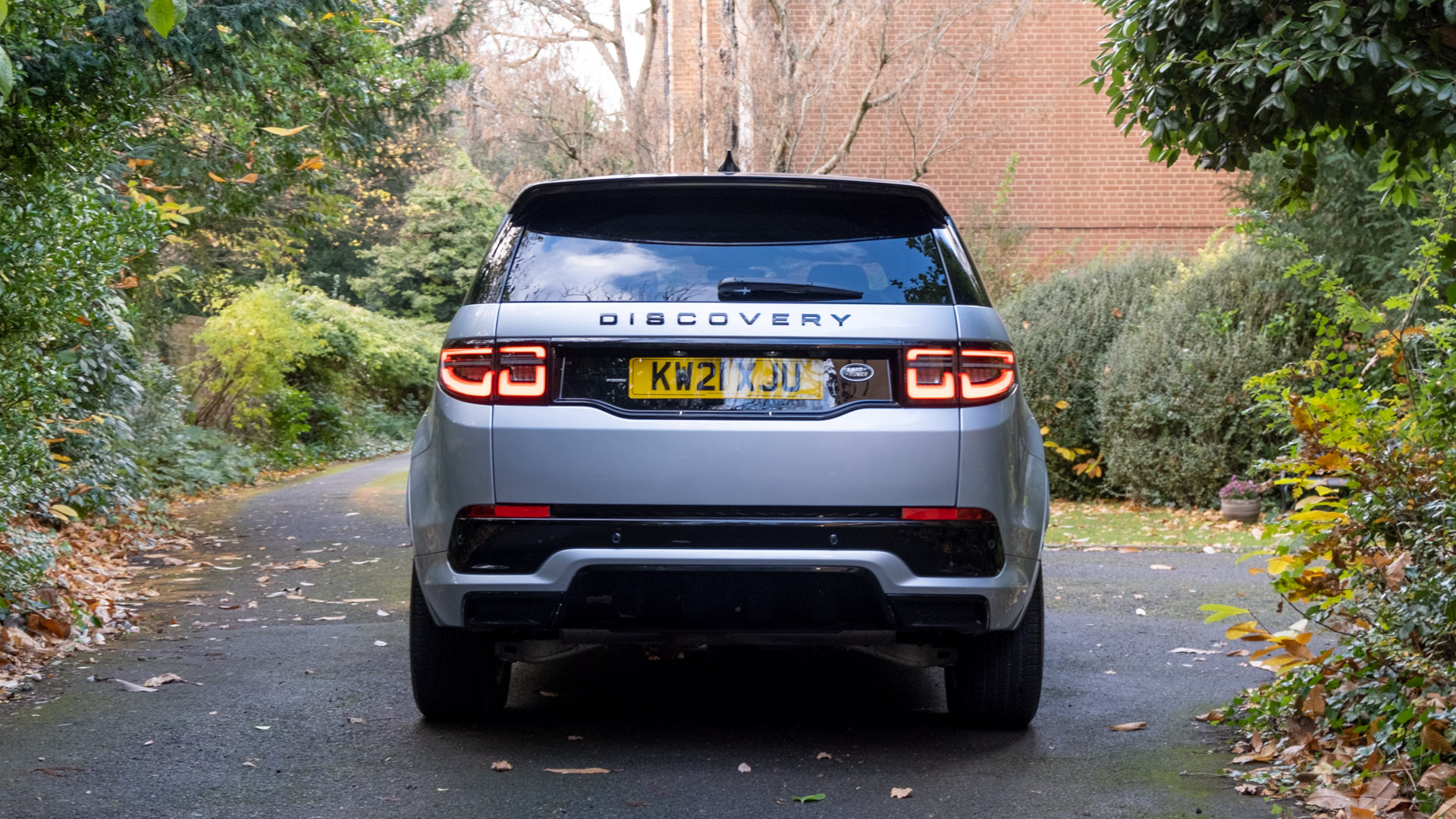
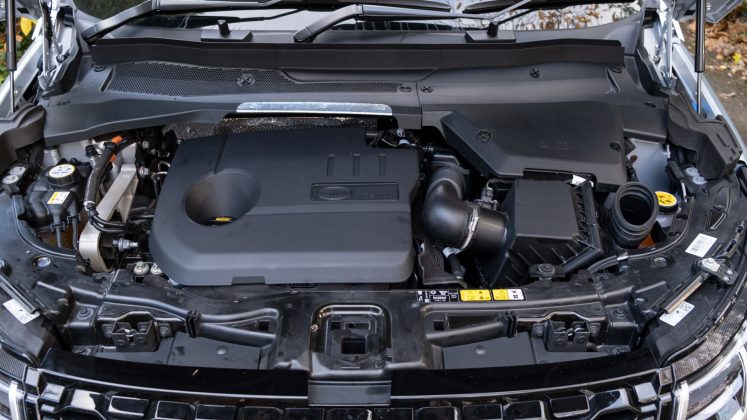
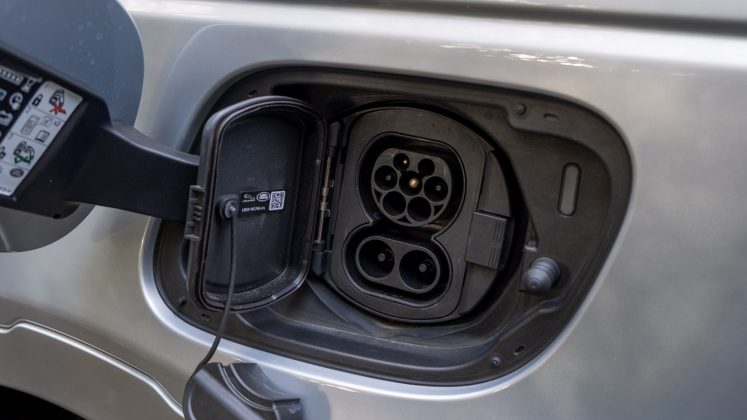
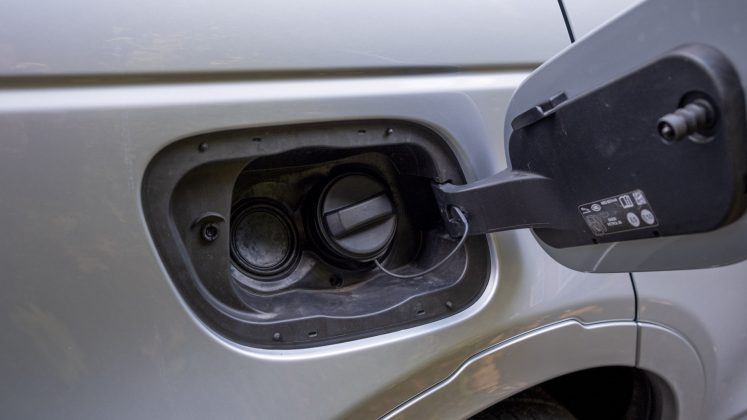
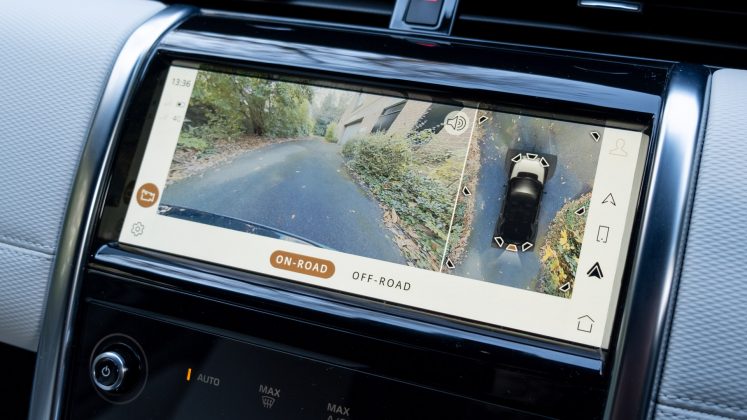
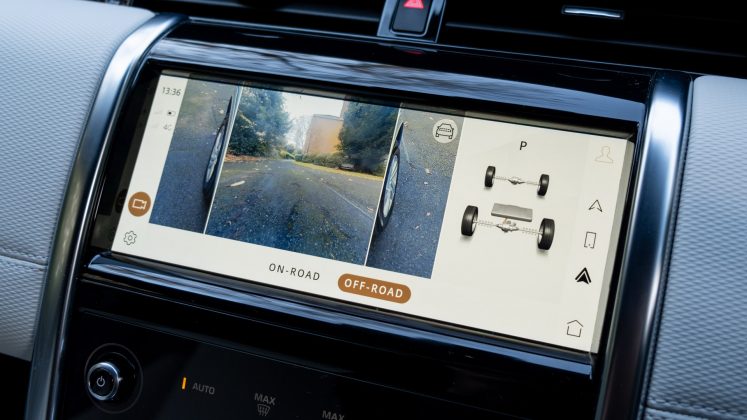
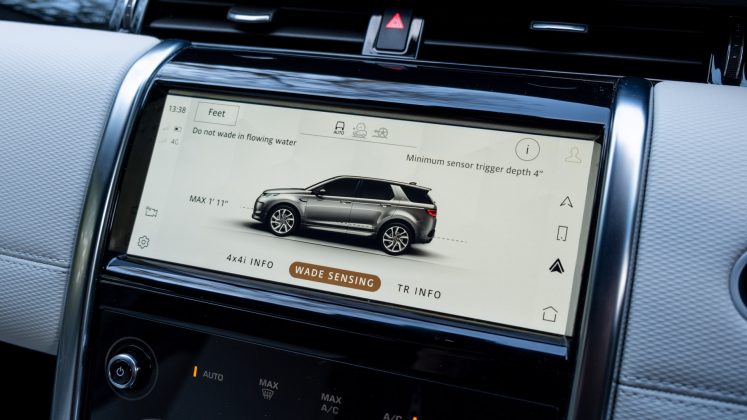
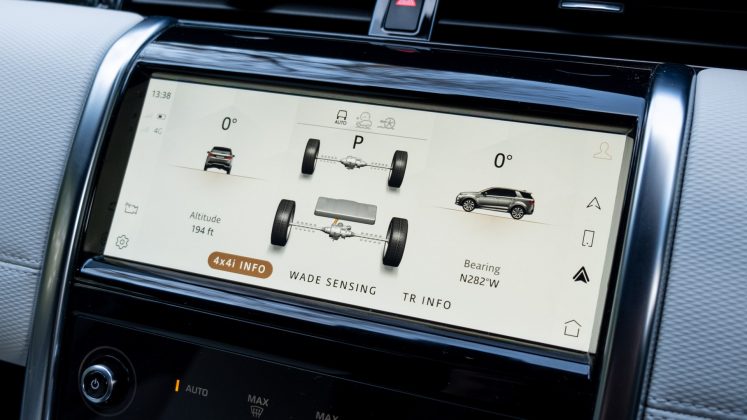
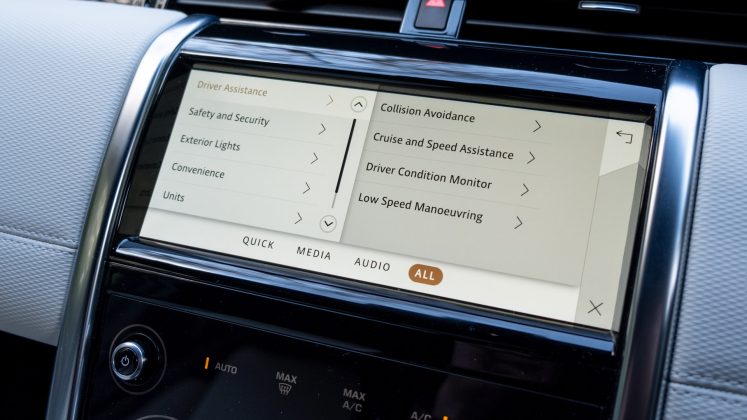
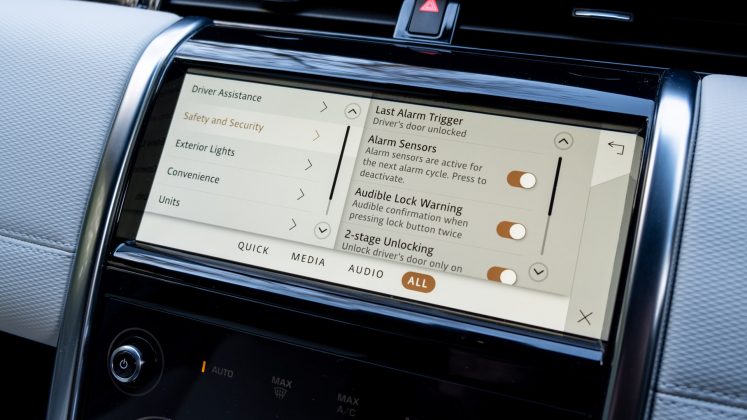
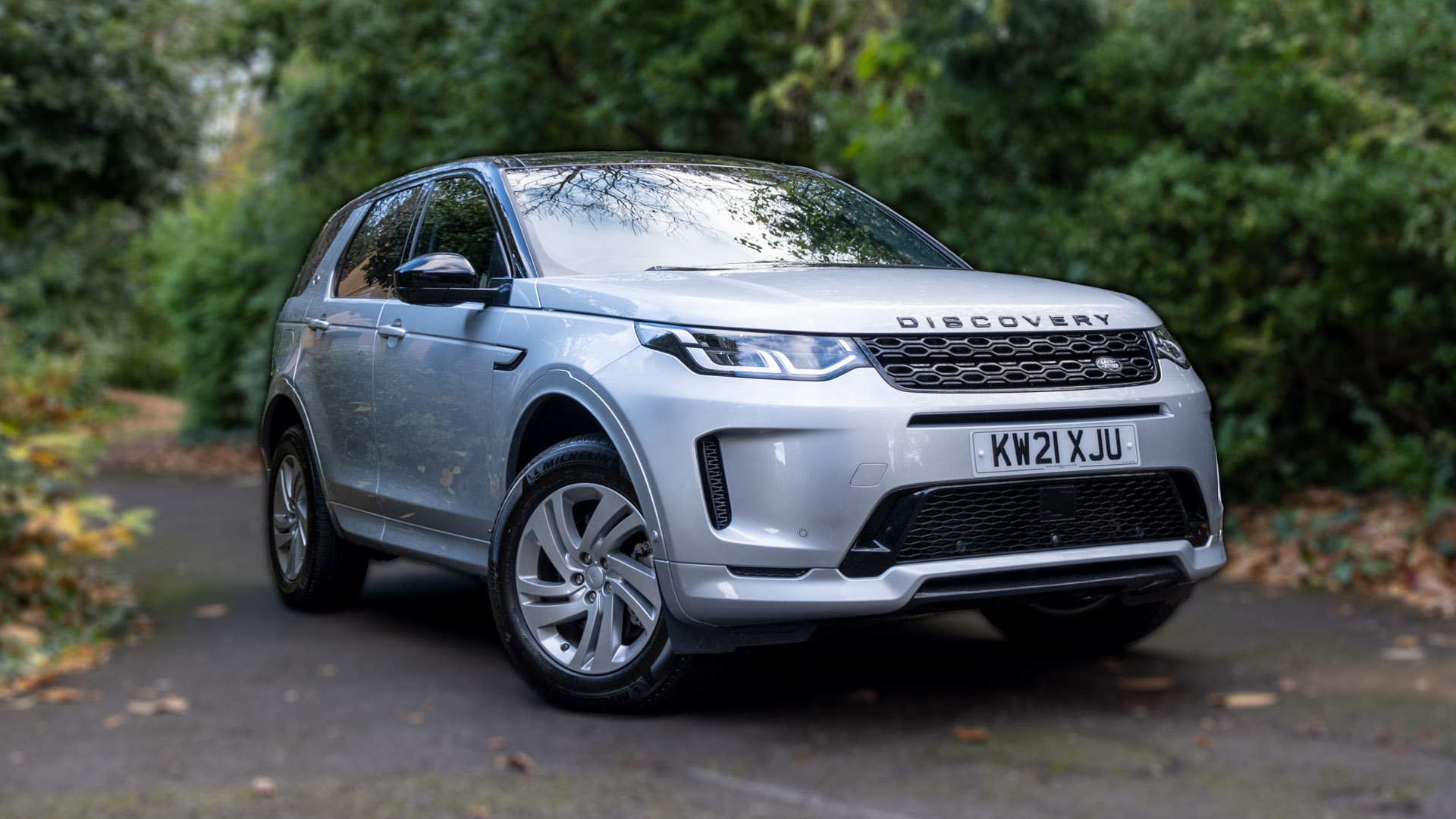




I would agree with most of your review, but you are comparing mostly with cars in a lower size class – the Discovery Sport is more comparable with the Audi Q5, BMW X3 and Volvo XC60 in passenger and cargo space and versatility – and then the price difference disappears. Like most PHEVs, the main advantage is for shorter journeys and I have seen up to 147mpg but typically around 100 – and nearer 35mpg once the battery is depleted – all in quite hilly terrain.
As for options, the Meridian sound system is well worth the cost, and the Solar Attenuating Windscreen also reduces noise so it is almost impossible to detect when the petrol engine cuts in except under heavy load. The excellent heater along with the ability to preheat the car renders the heated steering wheel superfluous. And the Clearsight rear view mirror is invaluable if you have a dog box or similar in the luggage area.
Thanks for sharing your experiences, but you’d be surprised at how much space/practicality some of its competitors offer!
Love mine, it’s an HSE with all options inc meridian surround sound system. It’s a great car, agree best for someone who mainly does short journeys but needs flexibility for long ones. Test drove an xc60 for a week as well and preferred the disco. Plus it’s British (built and designed) and was fed up of giving the Germans my cash. They get enough in parts for my mk2 gti
Haha, brilliant! Thanks for sharing; how did you find the XC60?
Have owned my Disco P300e for 6 months now (70 plate 50k miles, bought pre-owned). Used mainly for very short trips using battery only, but have taken some very enjoyable longer trips through the Peak and Lake District. Mine is the HSE model with most options.
Honestly don’t have a bad word to say, it’s very light around town and has plenty of power to move the 2.2 tonnes to make it feel like a much lighter car. Capable off road and as mentioned in the review, extremely quiet and almost impossible to detect the electric to ICE switch.
As mentioned in previous comments, the comparison between similar vehicles is a little off, with Q3, XC40 & x2 closer in size to the Evoque, this would be better compared to the Q5, XC60 and X3.
Glad you’re enjoying it.